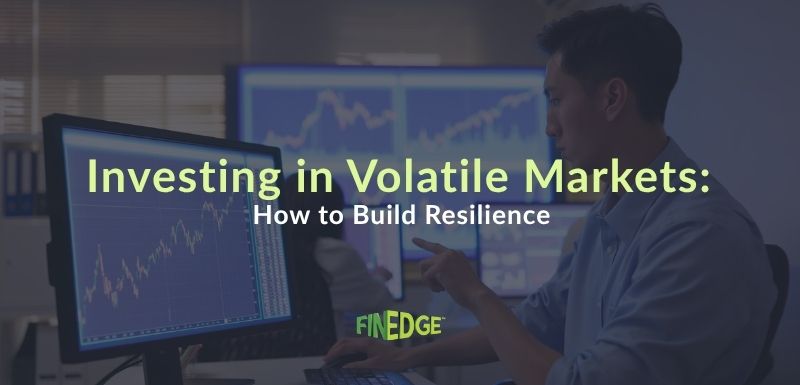Investing Insights
With over 2 decades of experience in the investment industry, Harsh is considered a subject matter expert in personal finance and has a keen interest towards the behavioral side of investing.
FinEdge’s bionic business model and its tech investment platform, Dreams into Actions (DiA), has been conceptualized by Harsh and enables the unique ability of FinEdge to bring the best of processes, people and technology together to deliver tangible value to investors.
Before founding FinEdge in 2011, he has worked extensively in the wealth management & private banking space with Standard Chartered Bank, Religare Macquarie & Dawnay Day AV.
Harsh is an MBA from Symbiosis Institute of Management Studies (Pune) and completed his BCom (Honours) from Hansraj College (New Delhi). Most of his schooling was done in Army Schools (APS – Dhaula Kuan).
Investing for Short and Long Term Goals: A Mutual Fund Guide for Every Investor
Every goal has a timeline, and your investments should reflect that. Here’s how to align your short- and long-term goals through mutual funds for smarter, more disciplined wealth creation.
How to Build the Right Emergency Fund: Things No One Tells You!
Most people think of an emergency fund as six months of expenses tucked into a savings account. But the reality is far more nuanced. Building the right emergency fund in India requires thoughtful planning, customized choices, and avoiding mistakes that no one usually talks about.
AI Investment Platforms – Helpful, But Not the Whole Story
AI-driven platforms are changing how we invest, offering speed and scenario analysis at scale. But while algorithms can project outcomes, they cannot replace the human touch needed for personalization and emotional discipline. The smartest strategy is to let AI enhance, not dictate, your investing journey.
Tactical vs Strategic Asset Allocation: Which Approach Fits Your Investment Journey?
Choosing between tactical and strategic asset allocation can shape your wealth journey. The right approach depends on whether you value flexibility or long-term discipline.
Specialised Investment Funds (SIFs): What Investors Should Know Before Investing
Specialised Investment Funds (SIFs) are being hailed as the “next big thing” in investing. But are they really a smart choice for you? This guide breaks down what SIFs are, how they compare with MFs, PMS, and AIFs, and whether they truly deserve a place in your portfolio.
Mutual Fund vs. Fixed Deposit Returns Over 10 Years: The Data Speaks
Fixed deposits promise safety and certainty, while mutual funds offer growth and wealth creation. But when you look at 10 years of data, the difference in outcomes is striking, especially once inflation and taxes are considered.
Planning Your Child’s Education Abroad: A Financial Roadmap
Sending your child abroad for higher education? Here’s a step-by-step plan to help you turn aspiration into action.
Step-Up SIP vs. Regular SIP: Which One Builds More Wealth?
Explore how Step-Up SIPs, small annual increases, can make a big difference when you're saving for major life goals.
Direct vs Regular Mutual Funds: What Investors Often Get Wrong
Are regular mutual funds really more expensive? Or is there more to the story?
Bionic Investing in India: The Future of Personalized Wealth Creation
Investing in India is evolving, but not in the way you might think. While digital platforms and robo-advisors offer convenience, they often fall short in understanding investor behavior and goals. That’s where bionic investing in India steps in - a powerful model where human insight and technology come together to deliver long-term, personalized wealth creation.
Why Most Investors Underperform Their Investments (Returns Gap Explained)
Many investors fail to achieve the full potential of their investments, not because they chose the wrong funds, but because of how they behave during market ups and downs. This difference in expected vs. actual returns is called the returns gap, and understanding it is crucial for long-term success.
Investing in Volatile Markets: How to Build Resilience and Stay on Track
Investing in volatile markets is never easy, especially when headlines scream panic and portfolios turn red. But market cycles are not the problem. The real challenge lies in how investors react. Building investing resilience, the ability to stay aligned with your goals and decisions through ups and downs, is essential for lasting success. In India, as retail participation grows, so does the need for calm, process-led investing.
Latest Posts
CAGR vs XIRR vs Absolute Return: Understanding Which Return Really Matters
Dec 19, 2025
Why Successful Investing Follows a Clear Why–How–Where Framework
Dec 17, 2025
The Impact of Inflation on Your Retirement Plan
Dec 15, 2025
Responsible Credit Card Usage: Three Principles Every Consumer Should Follow
Dec 12, 2025
FinEdge App: Invest With Clarity, Stay Disciplined, Achieve Your Goals
Dec 08, 2025
The Importance of your Child’s Education Goal
Feb 28, 2024
Why Retirement Planning is Important
Nov 08, 2023
Oct 31, 2023
Investing Behaviour and the investing roller coaster
Oct 12, 2023


.png)





_(50).jpg)
_(29).jpg)
_(45).jpg)
.jpg)
_(800_x_575_px)_(2).jpg)





